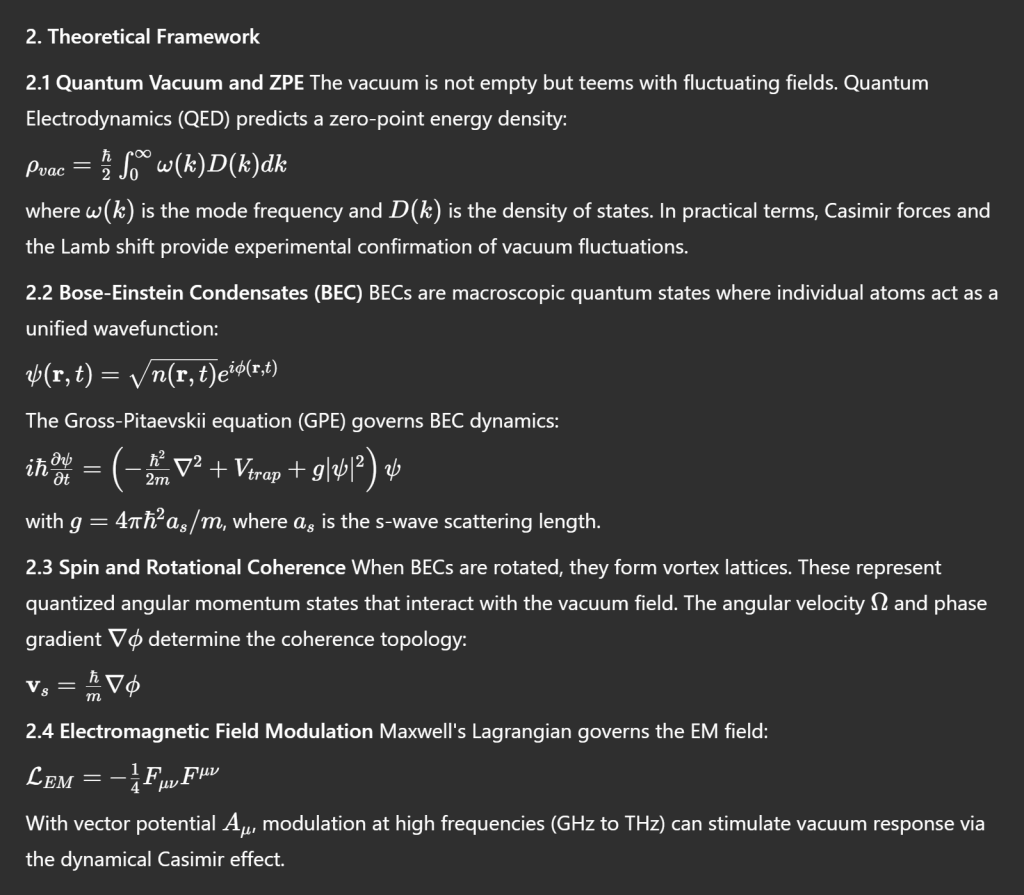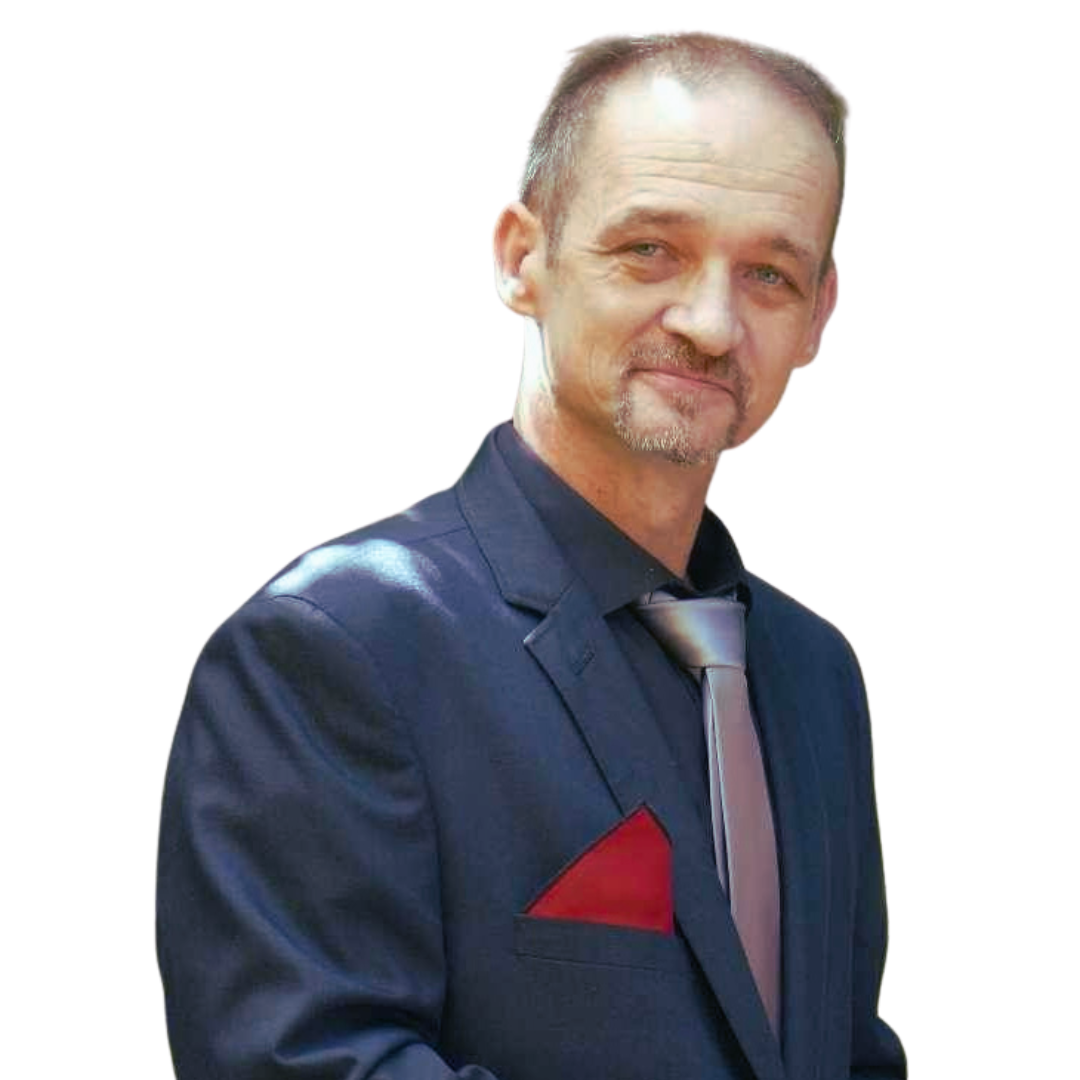Abstract: I propose a propulsion and energy framework based on the controlled coupling of coherent quantum matter systems with the zero-point vacuum field. Utilizing Bose-Einstein Condensate (BEC) dynamics, spin-induced angular momentum, and high-frequency electromagnetic (EM) field modulation, this engine design aims to interact asymmetrically with the quantum vacuum. The result is a theoretically plausible mechanism for propellantless movement, localized inertia modulation, and possible vacuum energy extraction. This whitepaper rigorously analyzes the concept using established physics: General Relativity, Quantum Field Theory, Casimir effects, and BEC formalism. We describe the theoretical framework, derive the field interactions, and explore implications for propulsion, energy generation, and time dilation.
1. Introduction
The idea of propulsion without reaction mass has been relegated to science fiction for decades, yet emerging research in quantum field theory, spacetime dynamics, and zero-point energy (ZPE) suggests viable paths to explore. While frameworks such as the Alcubierre metric [1], Sakharov’s induced gravity [2], and the dynamical Casimir effect [3] present foundational clues, this paper proposes a new synthesis: a coherence-driven vacuum interaction engine leveraging known field theory.

3. Coupling Mechanism
We hypothesize that a rotating, phase-locked BEC subjected to modulated EM fields can create a local vacuum asymmetry:

4. Expected Outcomes and Physical Implications
4.1 Propulsion By modulating vacuum energy density, the craft moves toward lower-energy regions — analogous to pressure gradients. Apparent thrust arises without ejecting mass.

5. Experimental Pathways
Construct a magneto-optical BEC trap with microwave field emitters.
Induce spin vortices at controlled
Measure vacuum interaction via microbalance, torsion pendulum, or interferometry.
Observe energy fluctuations or phase transitions under modulation.
- Limitations and Challenges
Maintaining coherence under dynamic field conditions
Achieving sufficient energy density gradients to impart macroscopic force
Isolating vacuum interaction from conventional electromagnetic artifacts
- Conclusion
This paper lays the groundwork for an experimentally accessible framework to test the hypothesis that coherent quantum systems can couple asymmetrically to the vacuum to generate movement, energy, and metric deformation. By leveraging well-known physical principles and minimizing speculative assumptions, the concept becomes testable. If confirmed, the implications span propulsion, power, and temporal control — a civilizational leap.
References:
Alcubierre, M. (1994). The warp drive: hyper-fast travel within general relativity. Class. Quantum Grav.
Sakharov, A. D. (1968). Vacuum quantum fluctuations in curved space and the theory of gravitation. Sov. Phys. Dokl.
Wilson, C. M. et al. (2011). Observation of the dynamical Casimir effect in a superconducting circuit. Nature.
Pitaevskii, L., & Stringari, S. (2003). Bose-Einstein Condensation. Oxford University Press.
Milonni, P. W. (1994). The Quantum Vacuum. Academic Press.
